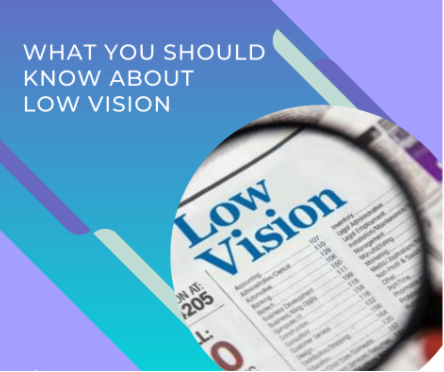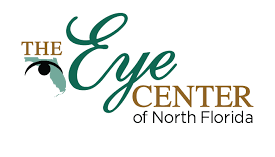Home » Blog » What You Should Know About Low Vision
What You Should Know About Low Vision
Posted by: The Eye Center of North Florida in Low Vision Rehabilitation, January 11, 2022

What Is Low Vision?
Low vision is a vision problem that makes it difficult to do everyday activities. Low vision is not correctible with surgery, glasses or contact lenses. This type of vision loss does not include complete blindness because there is still some sight, and low vision can sometimes be improved using visual aids – which are devices that help by maximizing remaining eyesight.
What Causes Low Vision?
Many different eye conditions can cause low vision. The most common causes are glaucoma, age-related macular degeneration, cataracts, and diabetes. Low vision is more common in older adults, but aging does not cause low vision on its own. Genetic disorders, eye, and brain injuries can also cause low vision.
What Are The Types of Low Vision?
The most common types of low vision are:
- Blurry or hazy vision
- Night blindness (not being able to see in low light)
- Central vision loss (not being able to see things in the center of your vision)
- Peripheral vision loss (not being able to see things out of the corners of your eyes)
Can My Eye Doctor Check For Low Vision?
Your eye doctor can check for low vision as part of a dilated eye exam. The exam is painless and straightforward. Your eye doctor will ask you to read letters that are up close and far away this allows for them to check whether you can see things in the center and at the edges of your vision.
During this eye exam appointment your eye doctor will administer eye drops to dilate (widen) your pupil and check for other eye problems, including conditions that could cause low vision.
Good News: Looking On The Brighter Side Of Things
If you have or know someone with low vision, there are many ways to make the most of your vision and keep doing the things you love to do. Losing sight does not mean giving up activities, but it may mean learning new ways to do them. Your eye doctor can help and guide you through the rehabilitation process. These are a few ways to make life with low vision easier:
- Brighten your home. The lighting may require some trial and error with different lights and voltages to determine what works best.
- Use a magnifier
- Use large print books
- Using high contrast for writing and writing in large letters with a broad black pen on a white piece of paper or board.
- Adding a high-contrast strip on steps will be very helpful. A bright color on a dark staircase, or a black stripe on light stairs can prevent falls in people with low vision. This will help and enable them to remain independent in their home.
- If you or a loved one has low vision, don’t be discouraged. Discuss with your eye doctor about the best course of actions to simplify life with low vision.
We Value Our Patients, And Your Eye Health Is Our Top Priority!
References: American Academy of Ophthalmology and National Eye Institute

